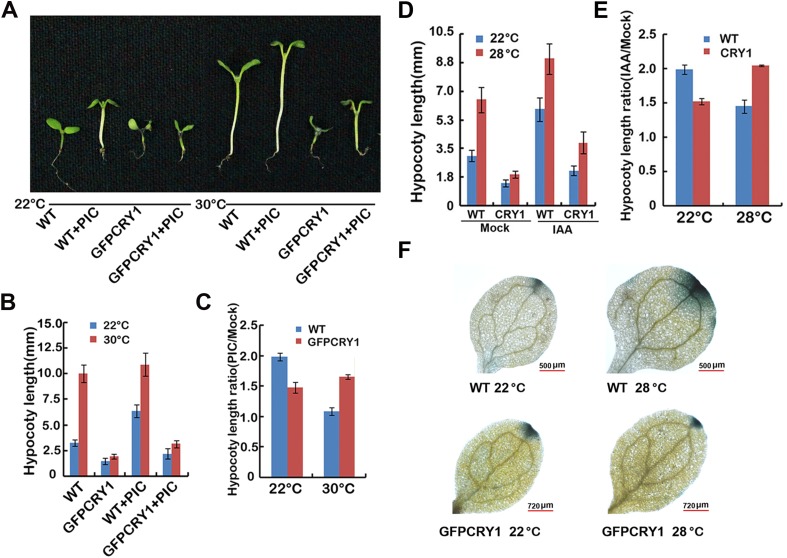Fig. S8.
Auxin treatment can partially complement the hypocotyl phenotype of GFP-CRY1 in response to elevated temperature. (A–C) Hypocotyl length of 6-d-old WT and GFP-CRY1 grown at 22 °C or 30 °C, with or without the synthetic auxin picloram. Seedlings grown in 22 °C and 30 °C continuous white light condition were sprayed with 1 µM picloram or mock after germination. Images of the representative seedlings are shown in A, the hypocotyl lengths were measured and are shown in B. SDs (n > 15) are indicated. Hypocotyl length ratios (Picloram/Mock) of the quantified hypocotyl length in B are shown in C. (D) Hypocotyl length of 6-d-old WT and GFP-CRY1 seedlings grown at 22 °C or 28 °C, with and without IAA. Seedlings grown in 22 °C and 28 °C continuous white light condition were sprayed with 10 µM IAA or mock after germination. The hypocotyl lengths were measured and are shown in D. SDs (n > 15) are indicated. Hypocotyl length ratios (IAA/Mock) of the quantified hypocotyl length in D are shown in E. (F) GUS staining of seedlings expressing DR5::GUS transgene in WT, GFP-CRY1 background.

